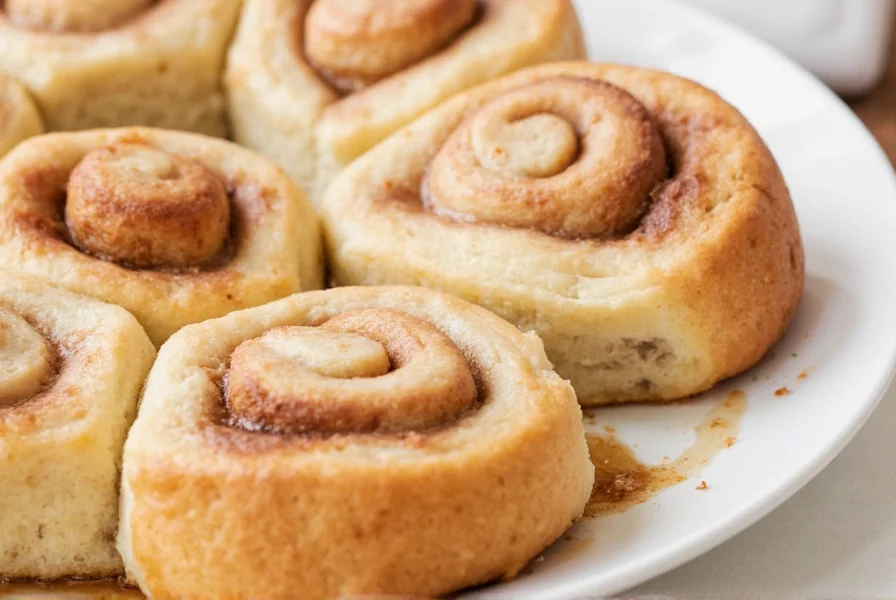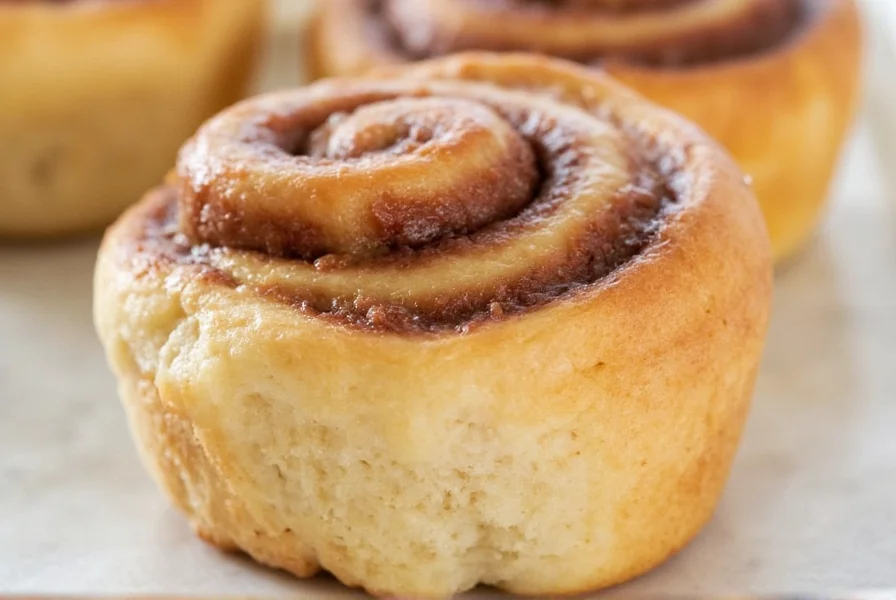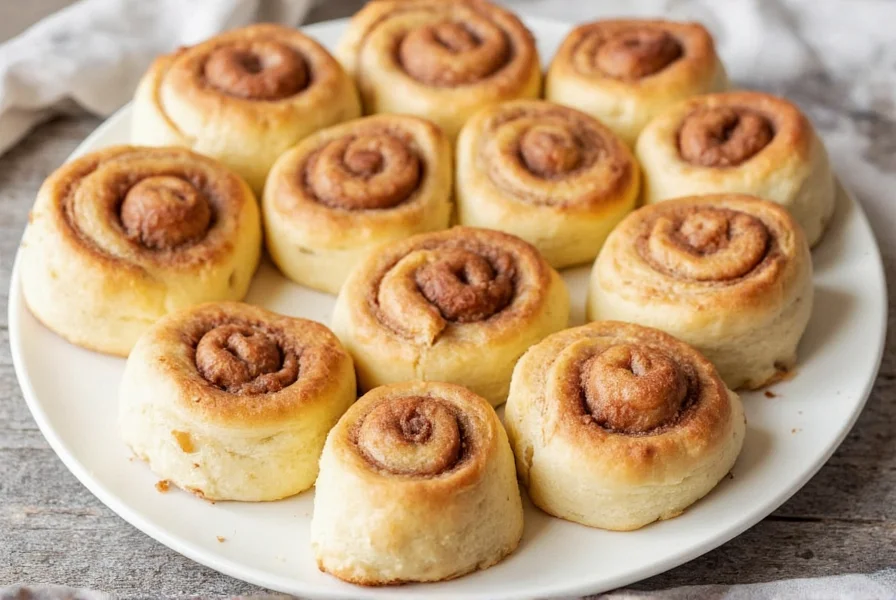Making cinnamon rolls from scratch might seem intimidating, but with the right technique, anyone can create bakery-quality results at home. Unlike store-bought versions, homemade cinnamon rolls offer superior texture and flavor control. The key is understanding yeast behavior and proper dough handling—critical factors that separate good cinnamon rolls from great ones.
Why This Homemade Cinnamon Roll Recipe Works
Most failed cinnamon roll attempts stem from improper yeast activation or rushed proofing. This recipe solves both issues with precise temperature guidance and clear visual cues. The dough uses bread flour for optimal structure while maintaining tenderness, and the filling incorporates brown sugar for moisture retention that prevents dryness after baking.

Ingredients for Perfect Scratch Cinnamon Rolls
Measure ingredients accurately using a kitchen scale for best results. Volume measurements can vary significantly.
| Component | Ingredients | US Customary | Metric |
|---|---|---|---|
| Dough | All-purpose or bread flour | 3 1/2 cups | 440g |
| Granulated sugar | 1/4 cup | 50g | |
| Warm whole milk (105°-115°F) | 1 cup | 240ml | |
| Active dry yeast | 2 1/4 tsp | 7g | |
| Unsalted butter, melted | 1/4 cup | 57g | |
| Egg | 1 large | 50g | |
| Filling | Packed brown sugar | 3/4 cup | 150g |
| Ground cinnamon | 2 1/2 tbsp | 18g | |
| Unsalted butter, softened | 1/4 cup | 57g | |
| All-purpose flour | 1 tbsp | 8g | |
| Glaze | Cream cheese, softened | 4 oz | 113g |
| Powdered sugar | 1 cup | 120g | |
| Vanilla extract | 1 tsp | 5ml |
Essential Equipment
- Stand mixer with dough hook (or large mixing bowl for hand mixing)
- 9x13 inch baking pan
- Rolling pin
- Pastry brush
- Kitchen thermometer (critical for yeast activation)
Step-by-Step Instructions for Making Cinnamon Rolls from Scratch
Dough Preparation (45 minutes)
- Activate the yeast: Combine warm milk (105°-115°F), 1 tbsp sugar, and yeast in mixer bowl. Wait 5-10 minutes until foamy.
- Mix wet ingredients: Add melted butter, egg, and remaining sugar to yeast mixture. Mix until combined.
- Incorporate flour: Gradually add flour and salt while mixing on low speed until dough forms a shaggy ball.
- Knead: Switch to dough hook and knead 5-7 minutes until smooth and elastic. Dough should pass the "windowpane test"—stretch a small piece thin enough to see light through without tearing.
First Proofing (1-1.5 hours)
- Place dough in lightly greased bowl, cover with damp cloth.
- Proof at 75°-80°F until doubled in size. Crucial tip: Avoid cold spots—near a warm oven works well.
Rolling and Filling (25 minutes)
- Roll dough into 18x12 inch rectangle on floured surface.
- Spread softened butter evenly over dough, leaving 1/2 inch border.
- Mix brown sugar and cinnamon, then sprinkle evenly over buttered dough.
- Tightly roll dough from long side, pinching seam to seal.
- Cut into 12 equal pieces using dental floss (prevents squishing).
- Place rolls cut-side down in greased 9x13 pan with 1/2 inch between rolls.

Second Proofing and Baking (1 hour)
- Cover rolls and proof until nearly doubled (about 45 minutes).
- Preheat oven to 350°F during last 15 minutes of proofing.
- Bake 22-25 minutes until golden brown and internal temperature reaches 190°F.
- Prepare glaze while rolls bake.
Cream Cheese Glaze (5 minutes)
- Beat cream cheese until smooth.
- Gradually add powdered sugar, then vanilla and milk to reach desired consistency.
- Spread over warm (not hot) rolls.
Professional Baking Tips for Perfect Results
- Yeast temperature matters: Milk below 105°F won't activate yeast properly; above 115°F kills it. Use a thermometer.
- Avoid over-flouring: Excess flour creates tough rolls. Add only enough to prevent sticking during rolling.
- Cutting technique: Dental floss creates cleaner cuts than knives, preventing rolls from losing their shape.
- Don't skip the second proof: Under-proofed rolls won't develop proper texture and may collapse when cut.
- Glaze timing: Apply glaze when rolls are warm (150°F internal) for optimal absorption without melting.
Storage and Reheating Instructions
Store leftovers in airtight container at room temperature for up to 2 days. For longer storage, freeze rolls (unglazed) for up to 3 months. Reheat in microwave for 15-20 seconds or in 300°F oven for 10 minutes. Always add fresh glaze after reheating for best results.
Frequently Asked Questions
Can I make cinnamon roll dough the night before?
Yes, prepare the dough through the first proofing, then refrigerate overnight. The next morning, let it come to room temperature (about 1 hour) before rolling. This cold fermentation actually enhances flavor development while fitting into busy schedules.
Why did my cinnamon rolls come out dense?
Dense rolls typically result from either too much flour in the dough or insufficient proofing. Measure flour by weight for accuracy, and ensure the dough doubles completely during both proofing stages. The ideal proofing temperature is 75°-80°F—too cold and yeast becomes inactive, too warm and it dies.
How can I prevent the filling from leaking out during baking?
To minimize filling leakage, use softened (not melted) butter as a barrier layer, leave a 1/2 inch border when spreading filling, and pinch the seam tightly when rolling. Cutting with dental floss instead of a knife prevents squishing that forces filling out. Proper proofing also helps—under-proofed rolls contract more during baking, squeezing out filling.
Can I use instant yeast instead of active dry yeast?
Yes, you can substitute instant yeast 1:1 for active dry yeast in this recipe. The main difference is instant yeast can be mixed directly with dry ingredients without proofing in liquid first. If using instant yeast, skip the 5-10 minute activation step and mix it directly with the flour.
What's the best way to achieve consistent roll sizes?
For uniform cinnamon rolls, first measure the rolled dough rectangle (18x12 inches is ideal), then divide the length by 12 to determine exact spacing (1.5 inches per roll). Use a ruler and make light pencil marks on parchment paper as guides before cutting. This professional technique ensures even baking and consistent appearance.











 浙公网安备
33010002000092号
浙公网安备
33010002000092号 浙B2-20120091-4
浙B2-20120091-4